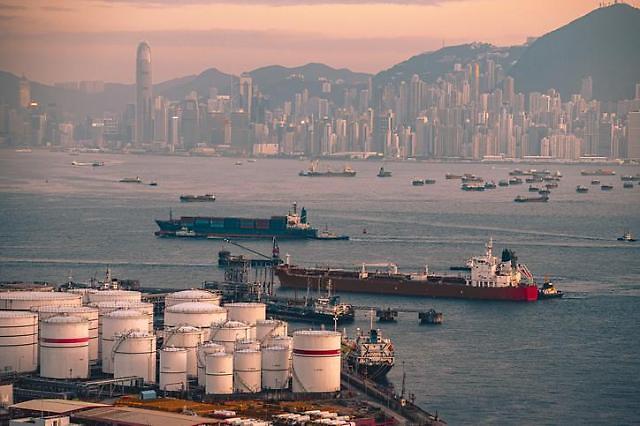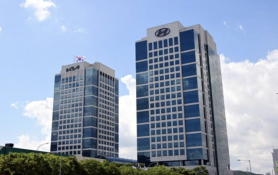
[Gettyimages Bank]
Global shipbuilders are trying hard to develop efficient eco-friendly fuel-based vessels to reduce their dependency on fossil fuels after the International Maritime Organization (IMO), a U.N. maritime safety agency, adopted compulsory measures to reduce greenhouse gas emissions from vessels by 30 percent by 2025. Hydrogen propulsion ships have been presented as a solution, but their fuel tanks take up too much space inside the hull.
The southern port city of Ulsan is the center of South Korea's hydrogen fuel-cell vessel industry. The city was selected as a demonstration zone for hydrogen ships in 2019 to have related regulations exempted for a short time to check the efficacy of equipment and technology. In 2021, a demonstration project was launched to build a universal platform for hydrogen and electric-powered ships by 2025. A consortium was launched in Ulsan in 2022 to accelerate the development of clean energy vessels.
The Ministry of Oceans and Fisheries said that a new set of revised standards for the construction of fuel cell vessels took effect on April 4. There were test standards for test fuel cell ships but the standards did not apply to existing shipbuilding facilities, making it hard for shipbuilders to construct and commercialize new fuel cell-powered vessels using their facilities and equipment.
The ocean ministry revised the new standards based on the temporary guidelines issued by IMO and reviewed the changed standards with experts in the maritime industry.
Building a fuel cell vessel is very different from building large or small-sized ships because the storage tank for hydrogen, the main fuel source, is very bulky. Ammonia is regarded as the next-generation maritime fuel as it can be stably stored in a liquid form and broken down to produce hydrogen through a process called "cracking." However, if a vessel is to carry ammonia as the main fuel, then it would need to have an on-board cracking unit to convert ammonia into hydrogen. This would become a big disadvantage for fishing and cargo ships as there will be less space for cargo.
South Korean steelmaker POSCO is involved in a project with the state-run Korea Institute of Machinery and Materials (KIMM), Daewoo Shipbuilding & Marine Engineering (DSME), and Korea Gas Safety Corp. (KGS) to develop a liquid hydrogen storage tank using high manganese steel, which is an alternative material for cryogenic services because it is easier to weld and has lower manufacturing costs than stainless steel.
In April 2021, Hyosung Advanced Materials, affiliated with South Korea's Hyosung Group, secured a six-year contract from Hanwha Solutions to supply high-strength carbon fiber used to reinforce hydrogen fuel tanks. Hanwha Solutions took over Cimarron Composites, an American company that has developed Neptune, a carbon fiber reinforced polymer tank capable of transporting 1,200 kg hydrogen gas in a standard 40-foot container.
In September 2021, the Hyundai shipbuilding group tied up with AVL, an Austrian engineering company that provides solutions and methodologies to shape future mobility trends, to develop hydrogen fuel cells for ships by 2025.
Copyright ⓒ Aju Press All rights reserved.




